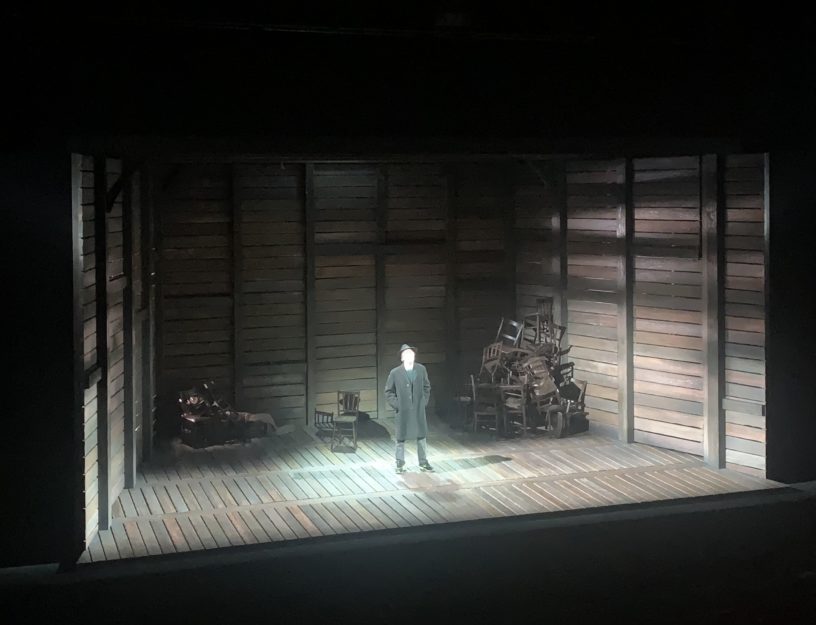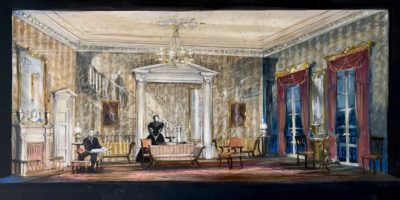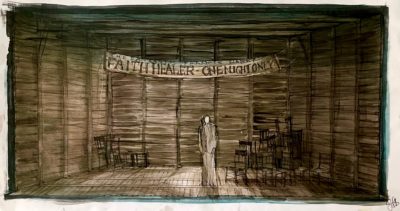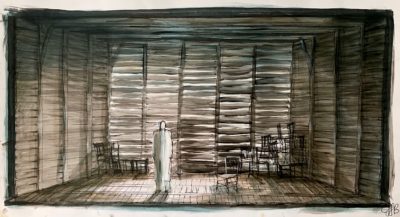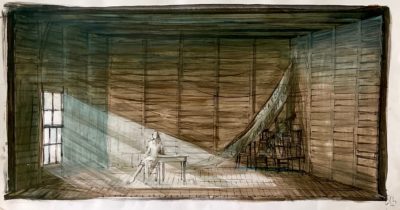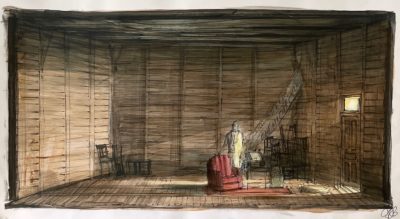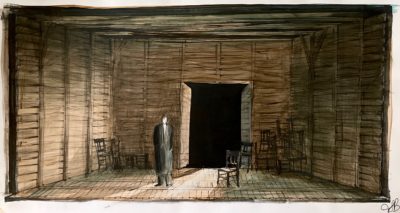Enlarge

Photo by Martha Swope ©Billy Rose Theatre Division, The New York Public Library for the Performing Arts
Faith Healer by Brian Friel premiered at the Colonial Theater in Boston. In those days of out-of-town tryouts, the more intellectual plays always tried out in Boston. The Colonial was wood paneled. beautiful, large, yet surprisingly intimate. It was logical that Mr. Friel’s play, directed by the legendary José Quintero, not a sure shot at all, would try out there in Boston with a thoughtful audience, and then make its way into New York at the Longacre Theater. By this method, all the terrors of production supposedly would occur in Boston, then the play would reopen two or three days after coming to New York. Our terrors happened in Boston.
The play starred James Mason, Clarissa Kaye, his wife of the time, and Ed Flanders, all in individual solo monologues. It was a challenge to the actors. Enormous praise by a visiting Julie Harris and a visiting Katharine Hepburn, friend to Brian Friel, would not convince Ed Flanders, despite his most brilliant performance as the cockney manager, not to depart the production. He left for his own reasons, possibly he couldn’t stand Mr. Mason’s wife, who had the most difficult part as the lover of the Faith Healer. Even though they never shared the stage, he reportedly didn’t want to be involved in the same production. Flanders was replaced by Donal Donelly, a lovely actor though a bit Dickensian for the part. The superb Flanders performance was a great loss. And Julie Harris would have been a great addition to the cast, if that was why she might have happened to have been visiting. That both Harris and Hepburn visited was tribute to their great interest in the theater and the roles created by this not-yet-so-well-known Irish author.
James Mason’s gorgeous voice was taxed to fill the large theater without amplification. The theater snobbery of the day made microphones suspect and unprofessional for a supposed ‘film star’ and at 70, he had a hard time sustaining the volume for the long, long monologues. Twenty years later he would have had a body mic and all would be well, but that was the professional theater snobbery of the day.
I can still hear James Mason in my head reciting the names of the towns visited in their little caravan. “Kinlochbervie.” He was perfectly cast, conveying the sad, beautiful, sexual death wish of the character, and always conveyed that in his thrilling, sad, ironic voice. Just sitting across a table from him for cocktails was an indelible experience, let alone having his past film roles haunting your memories. To this day I see him in old movies and can’t believe I actually worked with him.
The play deals with talent, suffering, alcohol, wandering, and faith. José Quintero, our deeply instinctive director, certainly knew Christian suffering, “It’s Christ nailed to the cross,” he said. After all, José had soared, crashed, and resurrected himself. He no longer drank, but smoked a joint occasionally, as many of us did in 1978. Oddly, but perhaps not so oddly, he brought in pictures of gypsy villages in Spain as inspiration for this most deeply Irish play. Perfect for this work, José’s autobiography was called “If You Don’t Dance They Beat You”–almost exactly the plot of “Faith Healer.” I admired José for his honesty, and I saw what he meant, in the pictures of the gypsy villages, but I always wondered if the highly textured barn that emerged from my drawing board was quite right—but then I always wondered about such things. James Mason spoke (and leaned) against the large vertical post with heavy crossbeam—his own personal cross. And probably José’s as well.
Enlarge
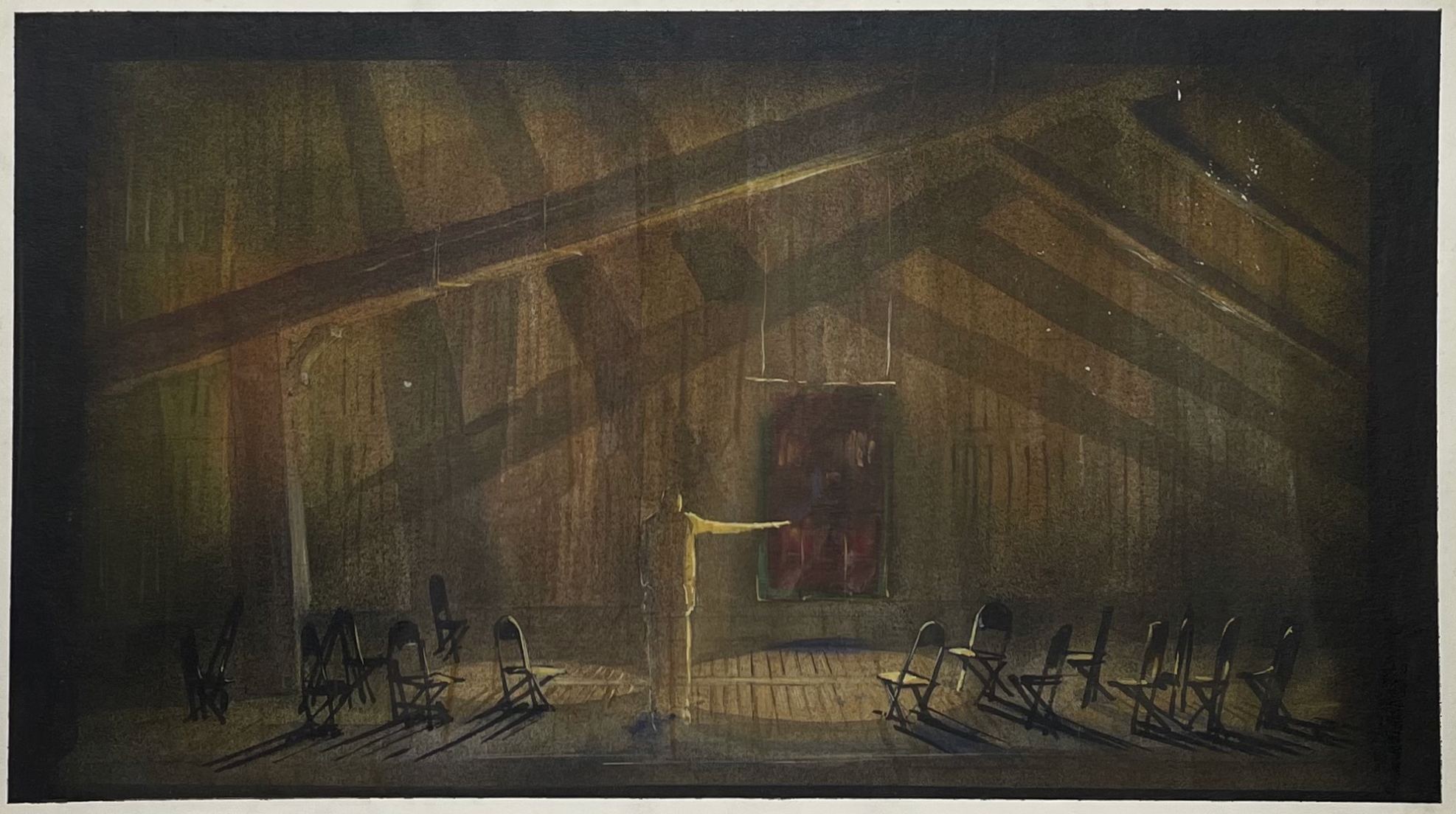
Original Sketch by John Lee Beatty
To make the finances work, to get this risky production on, there could be no set movement requiring stagehands, and only limited props changes, thus the poster of the Faith Healer was a prop removed from its permanent hanging bar at intermission. Having no fly cues saved one crew member. It was a risk to produce this kind of work.
The crisis continued with Ed Flanders’ unhappiness. I will always remember a most morose playwright, Mr. Friel, sitting halfway up the aisle in the Colonial being comforted by costume designer Jane Greenwood as the production lurched relentlessly along its road to Broadway. The incipient actor departure led Mr. Friel into darkness. I don’t blame him. I should have joined Jane in consoling him. We loved his play.
To complicate our out-of-town problems, half the set had burned in a fire in Long Island City before being shipped to Boston — and we didn’t know which half of the set was consumed until we put what remained up in the Boston theater and thus discovered what was missing. When we finally reached the Longacre Theater in New York, in the last rushed technical work calls I repainted parts of the set to complement the now established lighting design. I had observed in Boston how the lights had been focussed, then repainted at the Longacre to compensate. I adjusted the subtle light and dark values of the wood, only to discover that the lighting designer was inspired to change all the focus and color in her sole work session after my paint call. Nothing to be done about that mismatch, all done with sincerity of purpose. I thought I was helping her, and she thought she was helping me. I guess we were all having our worried second thoughts.
Donal Donelly, the replacement for Ed Flanders, only had two days to accomplish his enormous monologue. He was very good, but not really right for the part. Mr. Flanders had departed for television on the west coast. I’m not sure if he ever did another play. Faith Healer didn’t run, not long at all, but who knows what could have been.
Enlarge
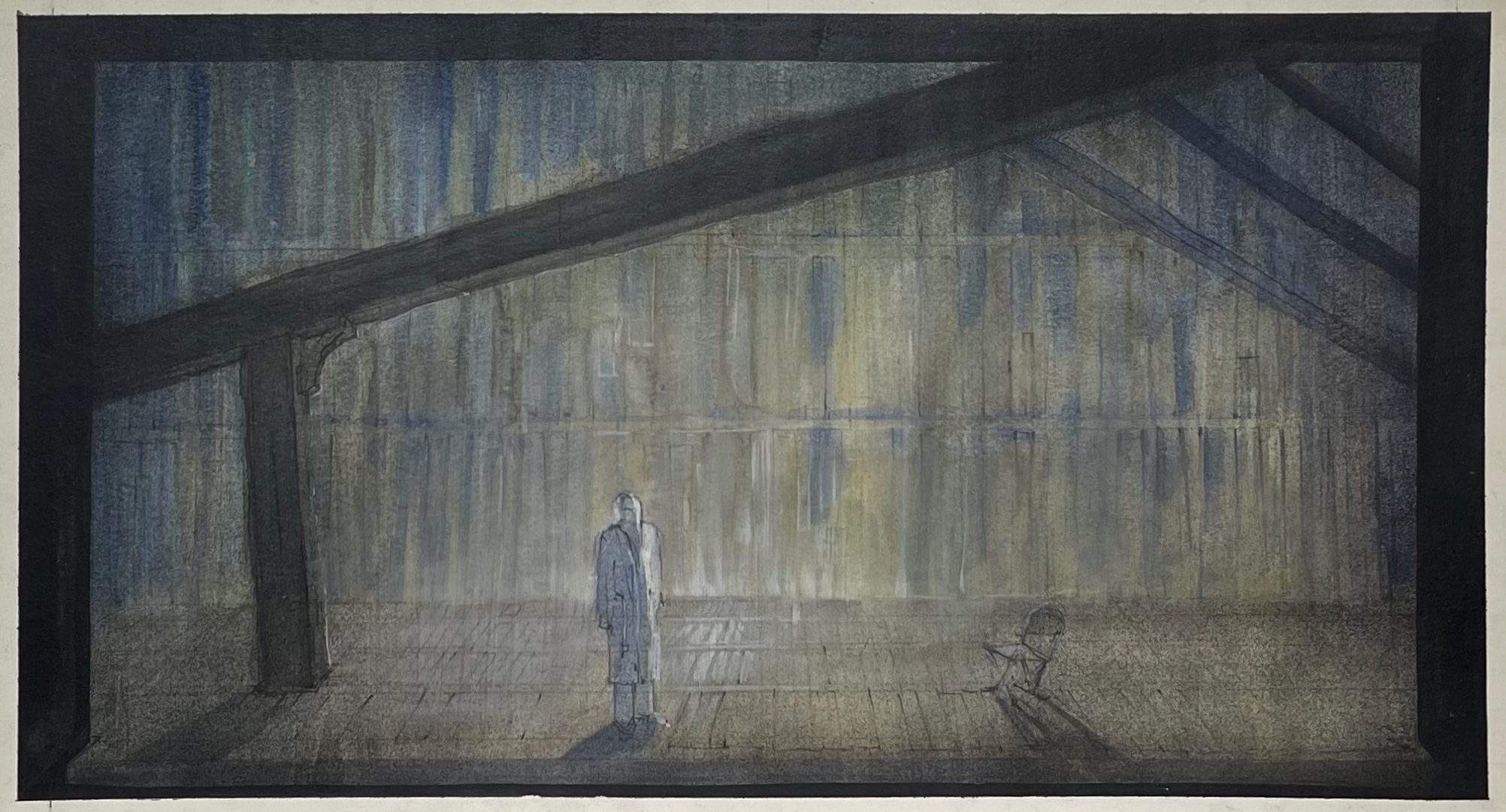
Original Sketch by John Lee Beatty
Audiences and critics didn’t quite know what to make of this play at the time, yet it has since gone on to great acclaim. Today, conflicting monologues and seemingly plotless plays are accepted. This play was charging into new territories. My director friends who saw it certainly ‘got it.’ And remembered it.
I still loved watching Faith Healer over and over—it was seemingly tedious, yet totally, totally addictive. And it provided us the great gift of spoken word and voice, James Mason reciting town names in Scotland and Ireland with a morose gleam in his eye … in my ears for life. “Kinlochbervie.”
I have now, in 2021, during Covid, finished the process of readying a new production of this play at the Abbey Theater in Dublin. The director Joe Dowling, had the wonderful idea of asking me to design it again. I am so excited and grateful to have a second crack at this brilliant and difficult play, more than 40 years later. Already the doubt is setting in, as I now know it should, but I am grateful for the chance to revisit this play, and live in it again, and to revisit Kinlochbervie and those other towns.
As the play began in Ireland, now at the legendary Abbey Theater, I alone had the privilege of witnessing two productions at once, as the new production conjured up the sound and images of the original 40 years ago in Boston. So many sounds in my head, so many images in my memories, I realized the play was even better written than I had remembered. “Kinlochbervie” in spoken word is forever part of me.
Enlarge
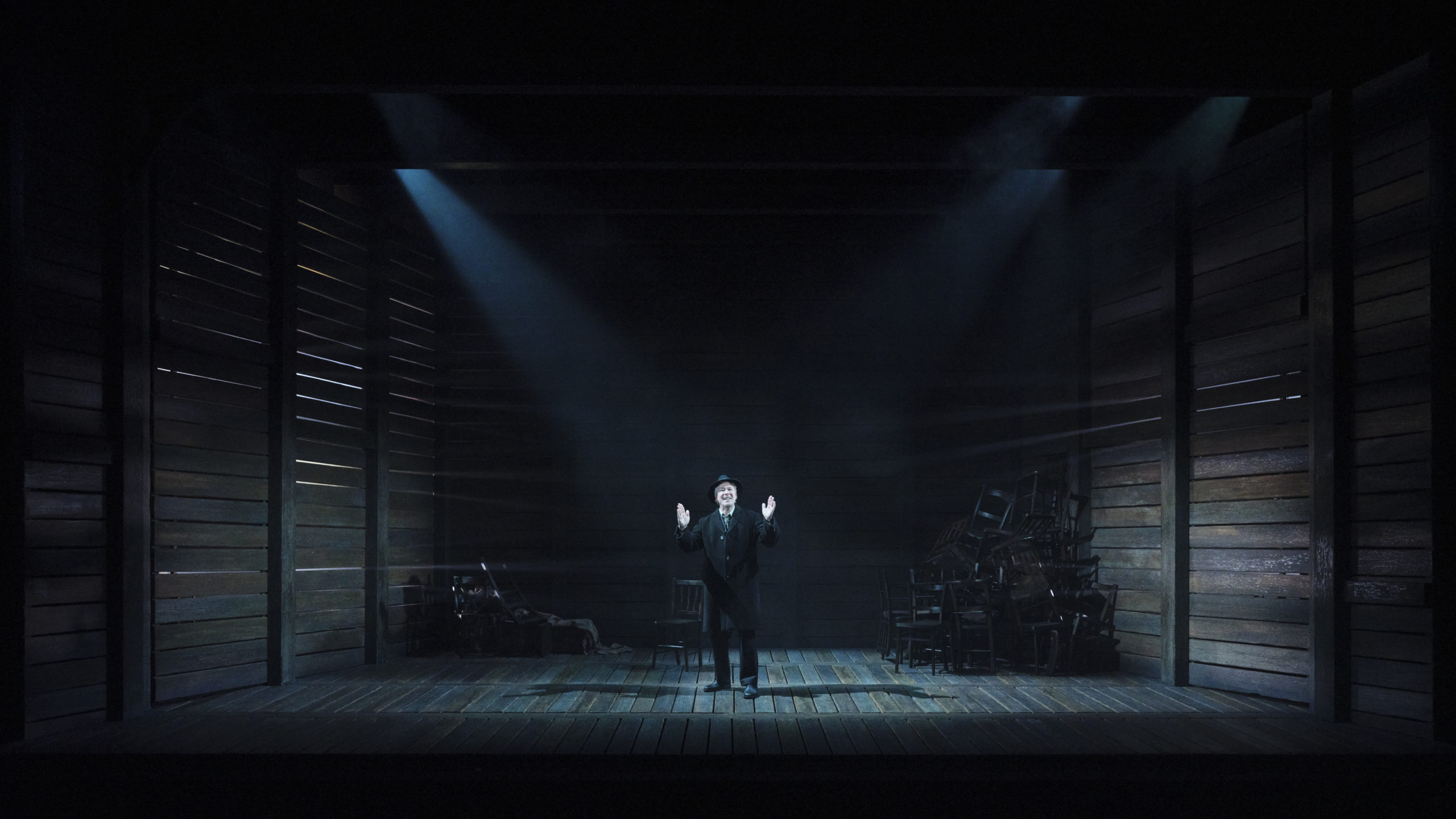
Photo by: Ros Kavanagh, Set Design by: John Lee Beatty
Enlarge
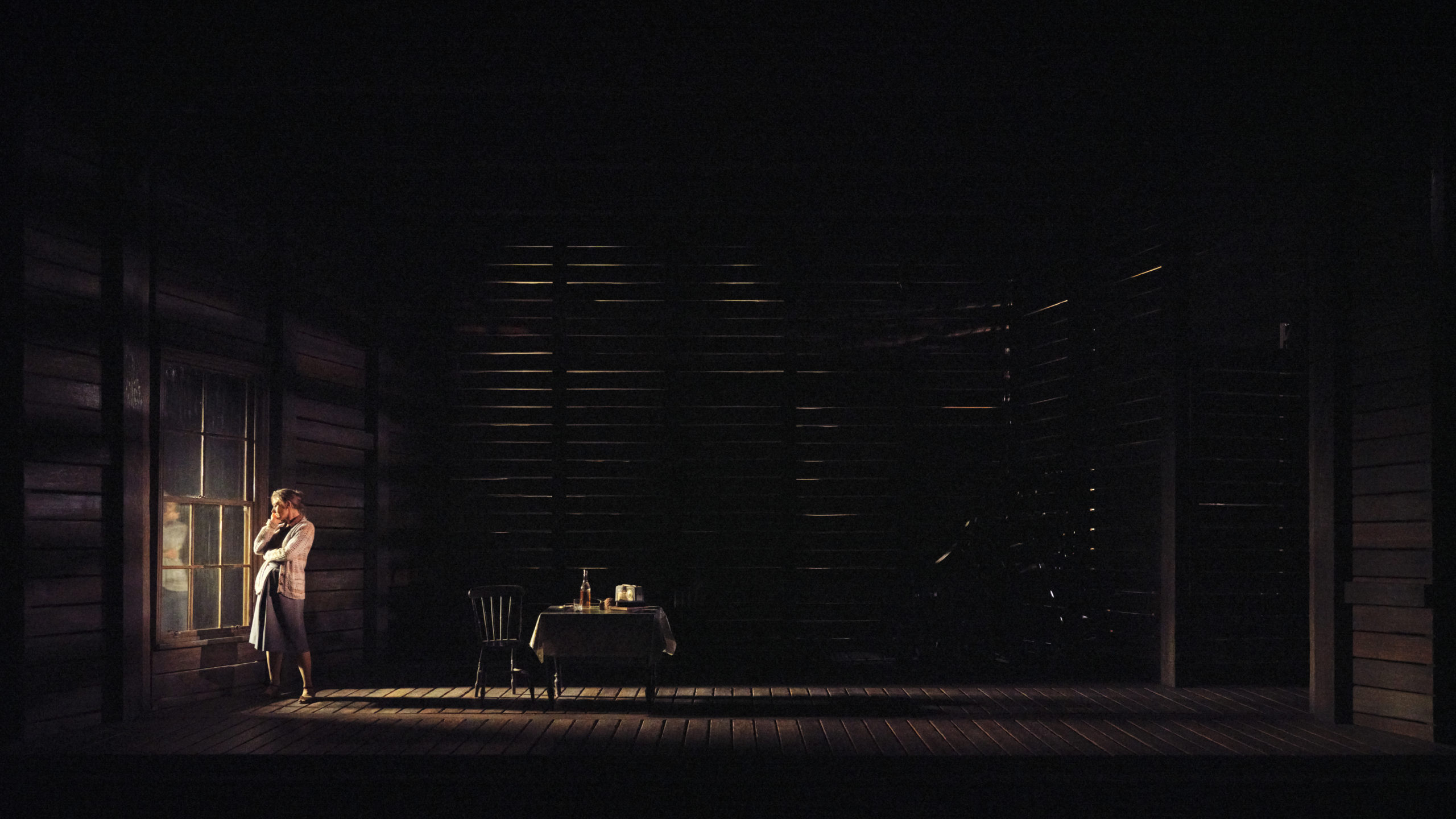
Photo by: Ros Kavanagh, Set Design by: John Lee Beatty
